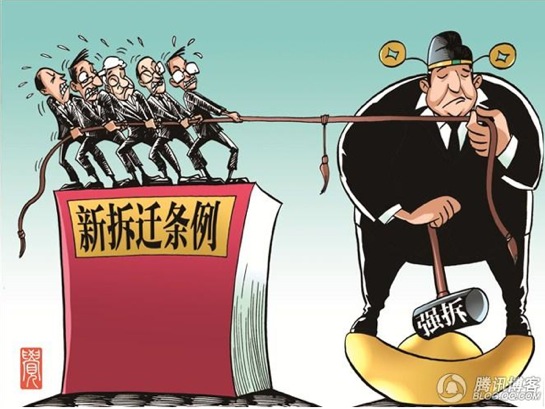Why we all feel so vulnerable
Earlier this month, People’s Forum magazine, which is published by the official People’s Daily, ran a story about a national survey showing that close to half of all government officials in China view themselves as being among the nation’s “vulnerable groups” (弱势群体). According to the same survey, 73.5 percent of all Internet users identify themselves as “vulnerable,” as do 57.8 percent of white collar workers and 55.4 percent of writers and academics. In short, the People’s Forum report points to epidemic levels of insecurity in China.
I had my own double-edged brush with vulnerability when I microblogged recently about a trip I made with my 82 year-old father to a hospital in Guangzhou. We had waited for several hours for an injection before I finally gathered the courage to ask the nurse why things were taking so long. “Everyone is waiting, don’t you see that?” she answered brusquely. This set me on edge, and I later decided to vent my anger through my microblog. Immediately, scores of readers accused me of “exploiting the vulnerable,” “not considering others” and even of “bullying the weak.”
In the eyes of my accusers my tale of vulnerability had placed me up top with those privileged special interests.
It was the hospital’s total insensitivity to the vulnerability of my 82 year-old father — and their lack of reasonable policies for getting patients in and out — that had angered me in the first place. But it had never occurred to me that others would regard this gruff nurse as vulnerable, and victimized by me.
Another experience that left me gloomy recently concerns my 18 year-old son. If one were to apply this concept of “vulnerable groups” to present-day Australia, where my son lives, there’s little doubt that recent immigrants, and particularly recent immigrants from mainland China, would be counted among the vulnerable. Most Chinese immigrants, save those corrupt officials who slip through the net, arrive in Australia “poor and blank,” as we say. Goaded on by a sense of vulnerability, Chinese in Australia push hard to change their stars, and fortunately the vast majority are able to establish themselves.
But the shadow of vulnerability lives on in the next generation, emerging in the overbearing hopes parents place on their children. We want them to excel, and we hope they gravitate toward the most profitable and respectable professions. I’m no exception on this count, and my hopes have been rewarded with a son who has achieved quite well and who could study whatever he wishes at his university of choice.
My son suddenly announced to me recently, however, that he wants to be a pilot.
Now you must understand that being a pilot in Australia means not only that you have little guarantee of a job, but that you have to be ready to pay the 150,000 Australian dollars (about one million yuan) it takes to go through pilot training. How many rich men in the world made their millions flying airplanes?
In any case, my son confessed to me that his passion is for flying. I wanted to say to him, “Look, can a passion feed the family? Can a passion . . . ?” And then I stopped, realizing that my son doesn’t share the same sense of vulnerability that I have.
The fact is that in Australia you won’t go hungry if you’re not a doctor, a lawyer or a businessman. You won’t find yourself underprivileged to the point of living out on the street. In a society where the basic necessities of life come with some guarantee, one can pursue one’s dreams with a freer heart . . .
Try separating Australian employees and bosses into the “strong” and the “weak” and you’ve set yourself a difficult task. Being a boss and employing workers may seem to put you in a position of strength. But Australian laws mean that you’re the one in the position of weakness in your relationship with those you employ. What about workers? They receive all sorts of guarantees that the government obliges employers to provide. On the other hand, you can’t say that bosses are in a position of weakness either. Most importantly, the law ensures that their personal assets are inviolable. When in the last few decades have you ever heard about wealthy Australians being stripped of their assets? Or of Australians having their homes raided and property confiscated? Or of Australians having their homes forcibly destroyed without compensation?
Both inside and outside China, when we talk about the sense of insecurity that prevails in our country, we dwell on such things as wealth disparity, social inequality and the pressures of life. All of these are factors, of course. But the most critical problem is the lack of institutional protections and rule of law.
In a fair and prosperous society, in a stable and harmonious society, in a society safeguarded by rule of law, everyone is equal, everyone is the boss of himself, and everyone is the boss of his nation. In such a society, the numbers of those belonging to so-called “vulnerable groups” are also substantially reduced.
In the absence of a good system, and in the absence of rule of law, the poor risk being exploited by the rich, the rich risk being swallowed by the powerful, the powerful risk being tormented and toyed with by the still more powerful, and the still more powerful are tormented in turn by waves of public opinion, fearing that a reckoning lurks around the corner.
We all become “vulnerable groups.” And we all become vulnerable to the accusation that we enjoy too much privilege.
This article was originally posted in Chinese to Yang Hengjun’s Blog on December 9.









